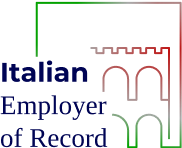3 September 2024
10 Steps explained: how to do business with an Employer of Record in Italy
Expanding into new markets can be a significant growth driver for companies in today’s globalised business environment. However, navigating the complexities of international employment laws, payroll, and compliance can be daunting.
In 2022, the global Employer of Record market was valued at USD 1,890.29 million and is projected to grow at a compound annual growth rate of 12.07%, reaching USD 3,745.43 million by 2028.
An Employer of Record (EOR) can simplify this process by managing these responsibilities on behalf of the company. This article outlines the comprehensive business steps with an EOR in Italy, ensuring a smooth and compliant international expansion.
Step 1: Understanding the role of an EOR
Before engaging with an EOR, it’s crucial to understand what an Employer of Record does. An EOR is a third-party organisation that takes on the legal responsibilities of employing staff on behalf of another company. This includes handling payroll, taxes, benefits, and compliance with local labour laws. The EOR becomes the official employer for legal and tax purposes, while the client company controls the employee’s daily activities and work responsibilities.
Step 2: Identifying the need for an EOR in Italy
To ensure a smooth entry into the Italian market, it’s crucial to identify specific needs that an Italian Employer of Record addresses. Common scenarios where an EOR proves valuable include:
- International expansion: For companies aiming to enter the Italian market without the hassle of establishing a local legal entity, an EOR can facilitate this process efficiently.
- Compliance management: Navigating Italy’s complex labour laws and regulations can be challenging. An EOR offers expertise to ensure compliance and avoid legal pitfalls.
- Payroll and benefits administration: Managing payroll and employee benefits in Italy requires local knowledge. An EOR handles these aspects, ensuring accuracy and compliance with Italian regulations.
- Risk mitigation: An EOR helps mitigate risks related to international employment, such as worker misclassification or non-compliance, by providing local expertise.
- Simplifying employment setup: When entering the Italian market, setting up employment structures can be complex. An EOR simplifies this process, allowing for a seamless and efficient establishment of your team, regardless of their location.
Step 3: Researching and selecting an EOR
Once you determine the need for an EOR, the next step is to select a suitable provider. Consider these factors:
- Reputation and experience: Choose an EOR with a proven track record in Italy and experience in managing local employment regulations.
- Technology and platforms: Evaluate the EOR’s technology for payroll processing, reporting, and communication to ensure it meets your needs.
- Customer support: Assess the quality and responsiveness of the EOR’s customer support to ensure reliable assistance.
- Pricing structures: Compare the EOR’s pricing against your budget, considering all associated costs.
Step 4: Initial consultation and needs assessment
To move forward, schedule an initial consultation with your selected EOR to discuss your specific needs. During this meeting, it’s essential to clarify the scope of services the EOR will provide and identify any additional requirements you might have.
Make sure to address the EOR’s capabilities in handling Italian labour laws and regulations to ensure they can effectively manage compliance.
Additionally, understand the process the EOR will use to onboard new employees, including how they will handle documentation, payroll setup, and compliance training.
Step 5: Contract negotiation and agreement
After the needs assessment, negotiate the contract terms. Include the following key elements:
- Service Level Agreement (SLA): Define performance standards and expectations for the EOR’s services.
- Pricing and payment terms: Outline the pricing structure, including setup and monthly fees.
- Termination clause: Include terms for terminating the agreement, including notice periods and any associated fees.
- Confidentiality and data security: Ensure the contract protects sensitive employee and company data.
Step 6: Employee onboarding
With the contract finalised, proceed with employee onboarding through the EOR. This typically involves:
- Employee documentation: Collect and submit necessary documents like identification and tax forms.
- Payroll setup: Configure payroll details, including salary and payment schedules.
- Compliance training: Train employees on Italian labour laws and company policies.
- Benefits enrollment: Enrol employees in relevant benefits programs.
Step 7: Ongoing management and communication
To maintain a successful relationship with your EOR, it’s crucial to engage in effective communication and management practices. First, ensure that payroll processing is both accurate and timely, as this directly impacts employee satisfaction and operational efficiency.
Stay informed about any changes in local labour laws and make sure the EOR adapts its policies and procedures accordingly to maintain compliance. Moreover, provide ongoing support for HR-related issues, addressing any concerns promptly.
Regular performance reviews with employees will help you gauge satisfaction and address any issues that may arise.
Step 8: Monitoring and evaluation
Regularly monitor and evaluate the EOR’s performance to ensure it meets expectations. Focus on:
- Payroll accuracy: Check the accuracy and timeliness of payroll.
- Compliance adherence: Review adherence to local labour laws.
- Employee satisfaction: Assess satisfaction with the EOR’s services.
- Cost efficiency: Compare the cost of EOR services with your budget.
Step 9: Scaling and expansion
As your business grows, collaborate with your EOR to manage scaling and expansion:
- Evaluate capabilities: Ensure the EOR can support new markets and increased demands.
- Plan onboarding: Prepare for onboarding additional employees and handling greater HR needs.
- Address compliance: Stay updated on compliance requirements in new markets.
Step 10: Reviewing and renewing the agreement
Periodically review and renew your EOR agreement to align with your business needs:
- Performance review: Assess the EOR’s performance in terms of compliance, payroll accuracy, and employee satisfaction.
- Contract renewal: Negotiate renewal terms, adjusting services or pricing as necessary to meet future needs.
The benefits of partnering with a country-specific Employer of Record
Expanding into Italy offers promising opportunities but comes with complex labour laws and compliance requirements. Partnering with a country-specific EOR can significantly simplify this process. An EOR brings expert knowledge of local regulations, streamlines hiring and payroll, and reduces administrative burdens.
This allows your business to focus on growth while minimising risk and ensuring compliance. To make your Italian expansion smooth and successful, contact us today to explore how our EOR services can benefit you.
Contact us


Reach out to us
Send us your request and a local expert will answer.
Send us a message


Want to talk to an expert?
Call Antonio. He has most of the answers.
Call Antonio


